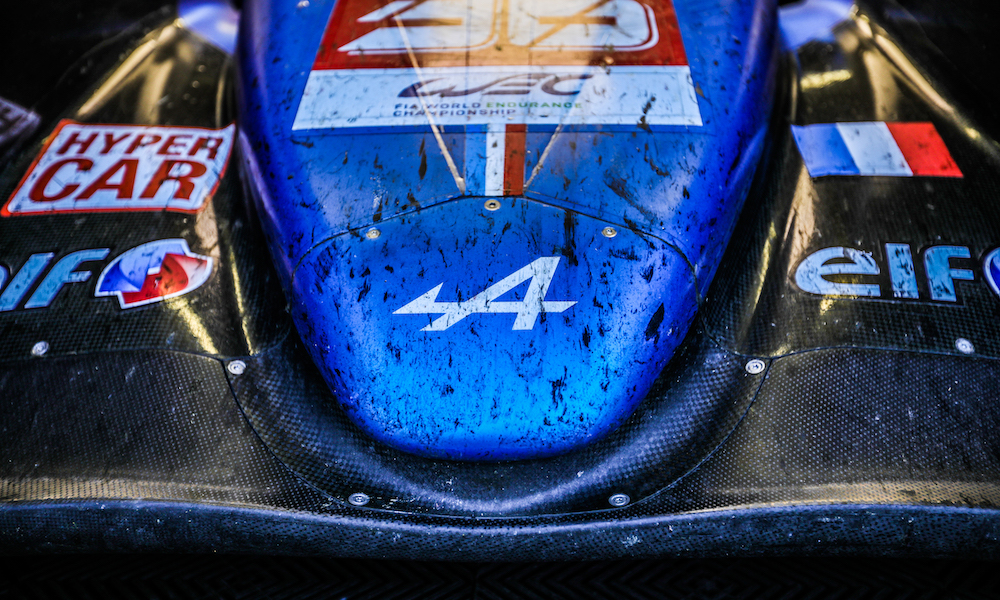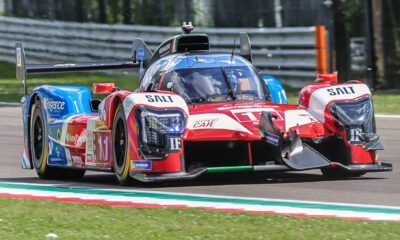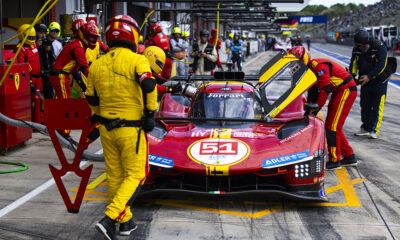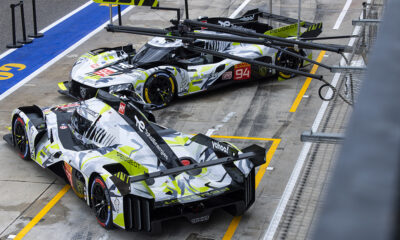Alpine Racing executive director Bruno Famin says the development of the Renault brand’s 2024 LMDh car is “accelerating” as Acura, which also has a chassis partnership with ORECA, gets closer to the January debut of its own new prototype.
ORECA’s work helping Acura to get its LMDh car homologated in time for the Rolex 24 at Daytona, as well as its assembly of Ferrari 296 GT3s and an expansion of its headquarters, prompted the French constructor to prioritize some of its tasks this year.
But Famin told Sportscar365 that Alpine is making greater strides now that the Acura ARX-06 is nearing approval to race in the IMSA WeatherTech SportsCar Championship.
LMDh manufacturers must develop their cars in partnership with one of four designated chassis suppliers. Alpine and Acura both went with ORECA, while BMW and Cadillac selected Dallara. Lamborghini chose Ligier and Porsche is aligned with Multimatic.
The unnamed Alpine LMDh is due to race full-time in the Hypercar class of the 2024 FIA World Endurance Championship and could also appear in the WeatherTech Championship with customer teams.
“The work is progressing well,” Famin said. “The Acura is now on the track, so we are now progressing well with ORECA in all fields: integration of the engine, aero etc.
“It’s accelerating. It’s no secret that the Bosch hybrid system was not 100 percent perfect, so all of the debugging they are doing makes it much easier for us.
“We would have been very happy to start in 2023, but we are also very happy to start in 2024.”
Alpine has not yet outlined when it plans to give the LMDh car its first rollout, although Famin confirmed that this will not take place before the end of this year.
“The idea is, as early as possible, to be ready for the 2024 championship,” he said.
“After, it will be part of our communication plan to announce this kind of thing in due time.
“For the time being, we are progressing well and we want to make the rollout as soon as possible, to be able to test as much as possible before the start of the 2024 season at the Prologue. We are working as per that timeline.”
Engine dyno testing is known to have taken place since June at least, as well as simulator testing.
Alpine is also yet to reveal its LMDh engine layout, however it appears to be leaning towards a bespoke unit rather than something linked to its road car output.
The A110 is Alpine’s current flagship sports car but carries a 1.8-liter straight-four that would struggle, even with modifications, to generate enough power to run an LMDh.
Famin explained that Alpine views the hybrid aspect of LMDh — which requires manufacturers to use the same Bosch electric motor, Williams battery and Xtrac gearbox — as the most important technological element for the brand’s marketing message.
“The technical regulations are quite prescriptive,” Famin said.
“It means that you need to make 500-plus kW. You need to find the best way to do it, with the best integration into the car.
“We went to that discipline because it’s hybrid and electrification is a keyword for the future of Alpine.
“After, the spec of the ICE [internal combustion engine] itself is a different story. We need to make the minimum level of power required.
“Electrification, thanks to the hybrid system, is where we can put our added value and know-how that we have, thanks to the Formula 1 experience.
“This is where we have all the links with the future standard of our road cars. What we are going to learn there, we are going to develop better powertrains for Alpine road cars.
“The strategy is to use motorsport to develop the brand in terms of technology and making the brand much more known around the world.”
Famin suggested that Alpine can utilize some of its F1 team’s expertise for the integration and operation of the hybrid system, even if the same unit is used by all cars.
When asked about the extent of F1 involvement on the engine side, Famin replied: “With the ICE as well, of course.
“We have quite a lot of Formula 1 technology in the ICE. Mainly in the combustion [chamber] for example. It’s something we can optimize thanks to the Formula 1 know-how.”
Alpenglow Previews “Future of Alpine Design”
The visual appearance of the Alpine LMDh car is another question mark at this stage of the program, although the brand recently revealed its radical Alpenglow concept at the Paris Motor Show to preview some of its future road and racing car designs.
However, Famin downplayed any direct links between Alpenglow and the LMDh.
“It has to be clear that we have two different cars,” he explained.
“The Hypercar is one car and the Alpenglow is another. It is showing the future of Alpine design, in terms of light, forms and everything.
“The future Alpine road cars and the future Alpine race cars will have some common points.
“But the Alpenglow is not the concept car of the Hypercar. It is the concept car of the whole Alpine design.
“Before finding the name Alpenglow, the name was ‘Manifesto’. You want to tell everybody what you are going to do.”



























